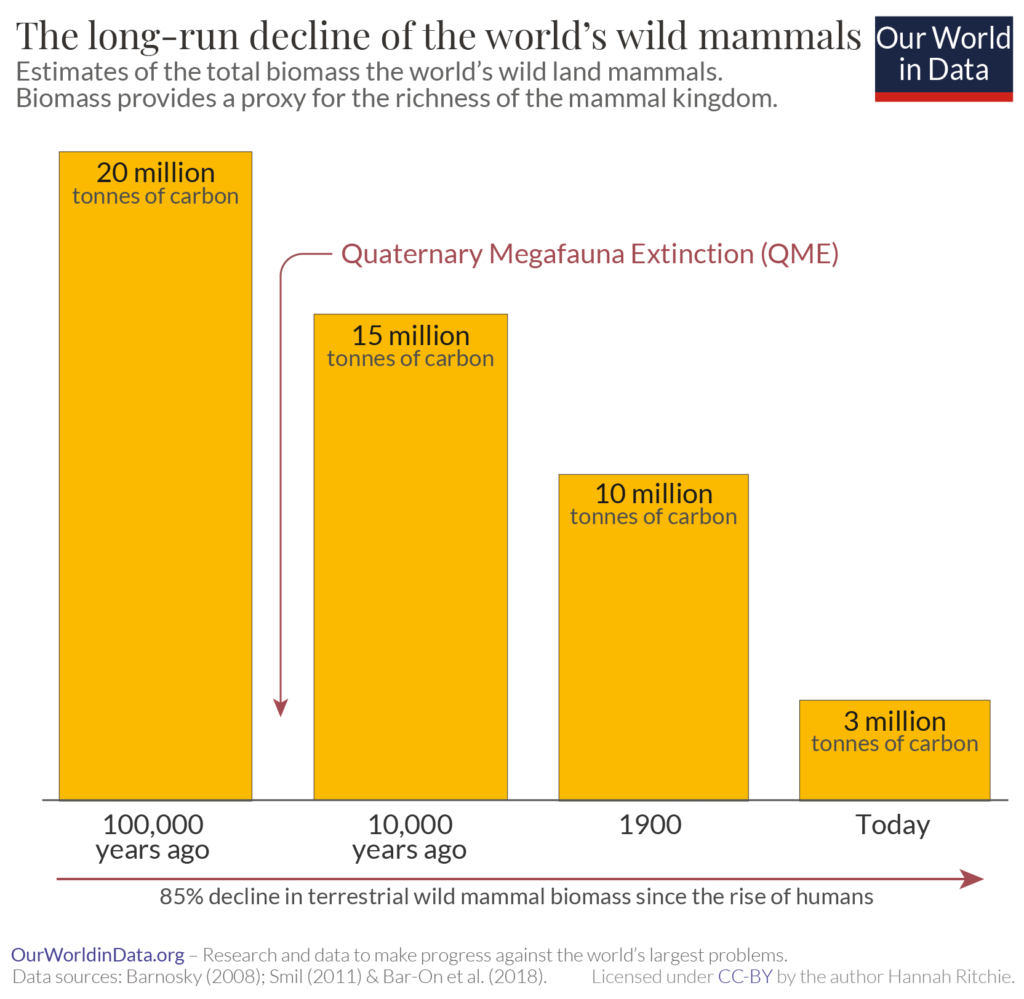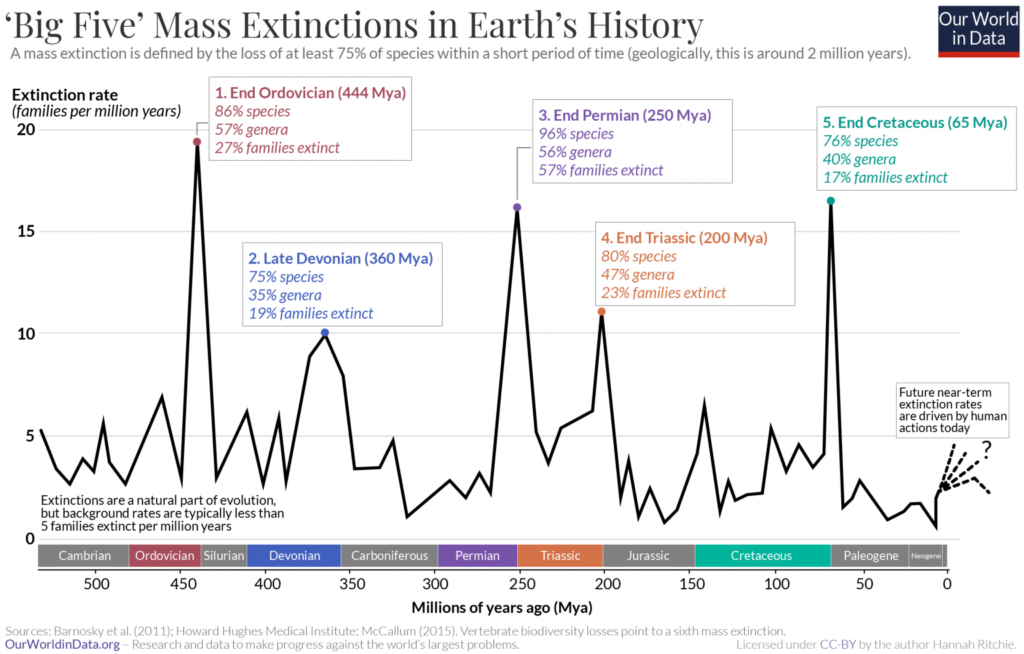Wildlife populations plummet by 69% since 1970s. That’s the recent headline from the World Wildlife Foundation 2022 report. What’s driving the trend? In a word, consumerism. Consumerism is the driving force behind three large scale threats that humanity faces today: climate change, the loss of biodiversity, and (as reader’s of Health in Flames and this blog know) the rise of chronic disease in America and abroad. The solution for the loss of biodiversity (see orange box) is easy since it is in our own self interest.
In the case of the loss of biodiversity – and specifically this is looking at the loss of mammals, birds, fish, amphibians, and reptiles – it is both the result of climate change and independent of climate change. Much of the loss comes from land use, either for agricultural or other use. The loss of biodiversity not only is tragic in itself but also leads to the rise of zoonotic diseases. As anyone who’s lived through the last few years knows, that can change our way of life and threaten our health and well-being.
Wild Mammals have declined 85% since the rise of Humans
The most concerning thing about the graph below is that the rate of loss of biodiversity is accelerating. According to the estimates in this illustration, while it took about 90 thousand years to lose 5million tonnes of mammalian carbon biomass in the past, more recently we lost 7 million tonnes in just the last hundred years or so.

5 mass extinctions have taken place in our planet’s history. The last of these was 65 million years ago when an asteroid hit the planet and led to the extinction of dinosaurs. Today, many scientists believe we are living in the midst of the 6th mass extinction.

This one is being driving by humans. Though we make up only 0.01% of the Earth’s life, we have had a devastating impact on our planet’s biodiversity to date. Previous extinctions took place over a 2 million year. time frame. The trends are very concerning but our future is still uncertain. Much depends on how go choose to move forward.
Biodiversity Stats from United Nations
According to the United Nations, humans are causing a dangerous decline of nature:
- We are using the equivalent of 1.6 Earths to maintain our current way of life and ecosystems cannot keep up with our demands. (Becoming Generation Restoration, UNEP)
- One million of the world’s estimated 8 million species of plants and animals are threatened with extinction. (IPBES)
- 75 percent of the Earth’s land surface has been significantly altered by human actions, including 85 percent of wetland areas. (IPBES)
- 66 percent of ocean area is impacted by human activities, including from fisheries and pollution. (IPBES)
- Close to 90% of the world’s marine fish stocks are fully exploited, overexploited or depleted. (UNCTAD)
- Our global food system is the primary driver of biodiversity loss with agriculture alone being the identified threat 24,000 of the 28,000 species at risk of extinction. (Chatham House and UNEP)
- Agricultural expansion is said to account for 70% of the projected loss of terrestrial biodiversity. (CBD)
It’s clear that transformational change is warranted. No more business as usual. Through sensible policy interventions, we can address and curb mindless consumerism and set forward on a sustainable path leading to a rebound of biodiversity and simultaneously set forward on a path to healthier living.

